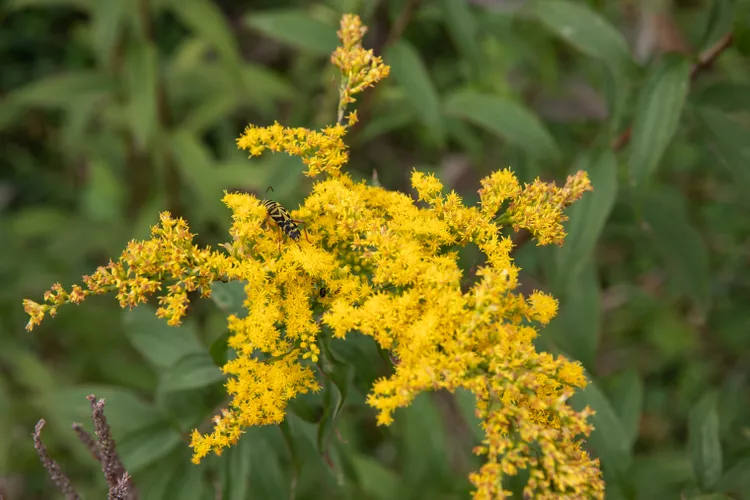
There are up to 120 species of the herbaceous perennial Solidago, also known as goldenrod, in its genus, which belongs to the aster family. From July to September, it has small, vivid yellow flowers in thick clusters atop tall stalks. More blooms will result from deadheading spent flowers. A perennial, European goldenrod has a single, woody stem that can reach a height of 3 to 7 feet. It frequently inhabits open areas and the edges of roadways. Although it’s small, but densely clustered, golden flowers are only about 14 inches across and typically bloom in August and September.
Goldenrod Care
Goldenrod species thrive in any sunny position with average or even poor soil and require very little upkeep. They can withstand a variety of growing environments and rarely have insect or disease issues. The taller kinds may require staking to prevent flopping and bending of the plants.

Light
Goldenrod demands full sun for best flowering. The plant can take little shade, although a shaded area will result in fewer blooms.
Soil
Goldenrod doesn’t have many soil requirements, but it does need to be well-drained and have a pH in the acidic to neutral range. Sandal, rocky, and clay soils are all acceptable to this shrub. The plant may become lanky and even flop over in extremely rich soil.
Water
Water fresh goldenrod plants once a week to keep the soil moist but not waterlogged. The only time additional watering is necessary for mature goldenrod plants is when rainfall is insufficient.
Temperature and Humidity
Depending on the species, the hardiness range varies slightly, however most varieties of goldenrod do well in USDA cold hardiness zones 2 to 8.
Fertilizer
Goldenrod often doesn’t require fertilization because it thrives in nutrient-poor soil. But if your soil isn’t very good or you want to help your plants grow taller, apply a layer of compost in the spring. Over-fertilization frequently results in sluggish green development and poor bloom yield.
Pruning
Goldenrod plants can get fuller and bushier and produce more flowers later in the season if stem tips are pruned early in the growing season. The bloom season can be extended late into the fall by deadheading spent flower heads. Before they set seed, flower heads should be removed in order to stop excessive self-seeding. Cut the plant stalks back to a few inches above ground level at the conclusion of the growing season or in late winter.
Table





